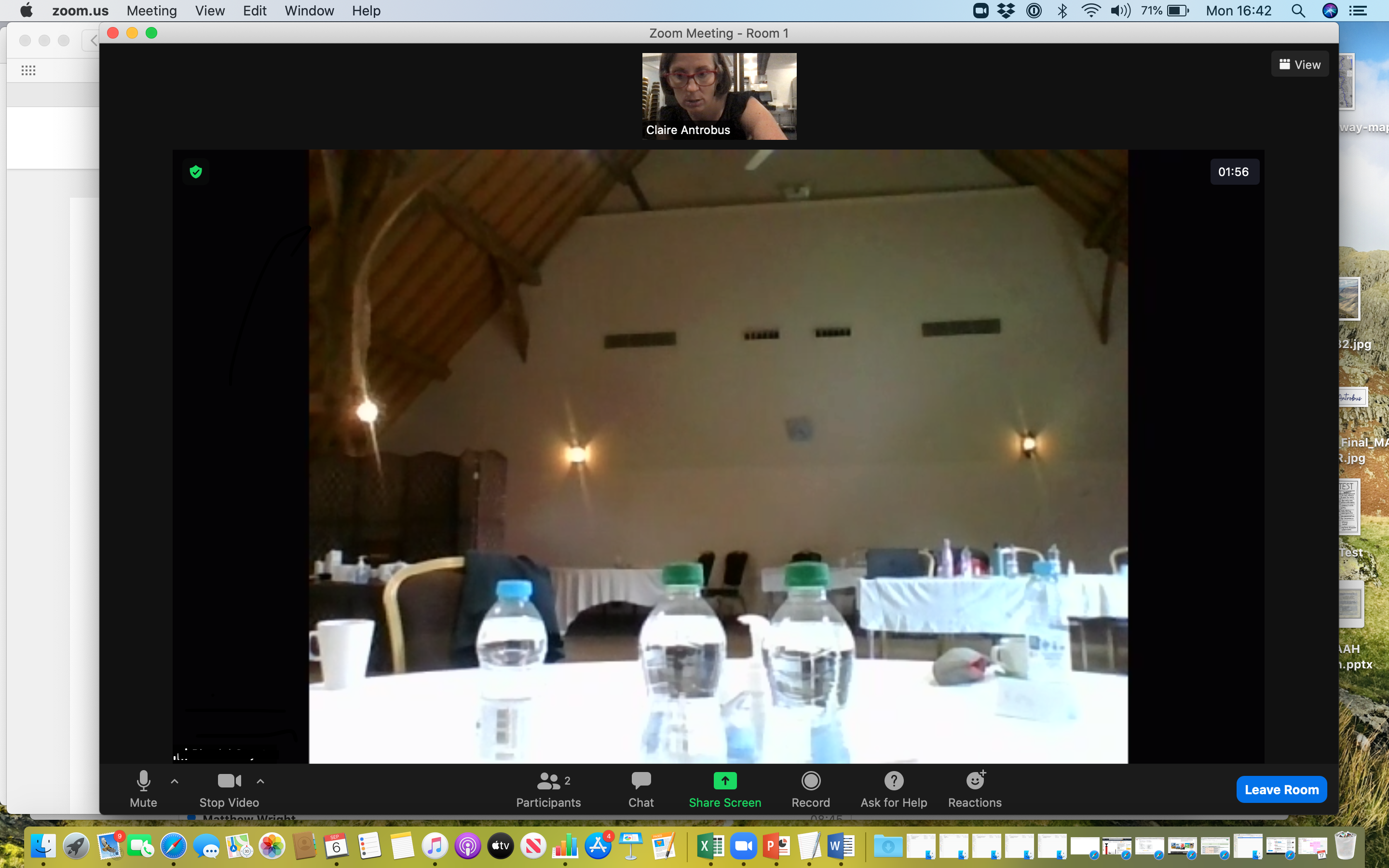Earlier this week I helped facilitate remote participation for a week-long course running face-to-face for the first time since March 2020. We didn’t actually need to action the plans we had prepared, but given many of us are preparing to offer hybrid events I thought it might be helpful to share our learning from the preparation we did.
I’m not an expert on the kit or technology involved, so these are going to be the reflections of a facilitator. Many of us are on a steep learning curve with the technological options and how to make them work well both in terms of hardware (microphones, cameras, devices) and software (Zoom, Mentimeter, Miro, Google Jam Boards etc etc). What I do know is having access to technical expertise is crucial, as is testing whatever equipment and software you plan to use so you feel confident about how it works and what it can (and can’t) do. So I did spend a slightly surreal hour or so sitting in a service kitchen pretending to be a remote participant so we could test microphones and Zoom configurations for the various scenarios we wanted to prepare for (as you can see in the picture above).
So what did we learn about facilitating hybrid events?
- Prepare well but expect glitches. Not everything can be rehearsed and not everything will work first time so it’s likely you might feel a bit nervous. Nerves don’t help, and so better we all accept things are unlikely to be perfect at the start. We invited the group to embrace this ethos and remember we were doing our best but this was new and we might not get it right first time.
- Test what it is possible to test. Practice and testing in situ was useful for building our confidence and ironing out glitches. Until we were in the space it was really hard to envisage exactly how we would do things. So making time to rehearse in the space we were using with the actual AV set up was critical for flushing out issues (like sound quality or microphone feedback).
- Check remote and access options integrate. If you have transcription services or induction loops etc in the session then it’s important to think through and test that these integrate with the remote technology and set up.
- Be clear what any contributors have planned. Will they need a Q&A section, do they want people to work in small groups and report back, are there are activities involving visuals or movement? Ideally ask your contributors for a schedule in advance that clearly indicates the format for their contribution. Hybrid events are probably new for them too and they might welcome some guidance (and support in real time) from facilitators about structuring their sessions to work well in a hybrid space. For those presenting online with an IRL audience they also need the facilitators to be their ‘eyes and ears’ in the room, so you need to communicate well.
- Plan for different potential scenarios and formats. We developed a table of possible scenarios and facilitation formats; e.g. 1) Q&Q with presenter remote, participants present; 2) several participants remote for small-group exercise. I expect we will refine and add to this resource as our experience develops.
- Have a back-up plan in case things don’t work. Sometimes there is an ideal solution (eg each remote participant joins a different break out group). But sometimes a simpler, less ideal, solution might be needed as a back up, for example all remote participants work in a small group together. Personally if I’ve not tried something before I like to have a trusted low-tech back up plan in my back pocket just in case…
- Keep it flexible and focus on one section at a time. For a multiday event we had a draft plan for the week but didn’t spend time preparing the whole week in detail. We took it a day at a time as we knew things would likely change at the last moment. Allowing time in the programme to adapt the set up if needed was helpful too. This did mean some very long days though…. so…
- Bring in extra capacity. My client brought me in as a dedicated remote facilitator, to work alongside the core facilitator team, and also invested in dedicated technical expertise to set up and operate the cameras and microphones. Chatting to my fellow facilitators we reckoned that once we’d run it through once in future a two-person facilitation team could absorb online and IRL facilitation between them. But having an extra pair of hands (and head to think the options through) made life a lot less stressful for a first-time running a hybrid event.
Having been a bit unclear initially about how well hybrid events could work now I’ve actually set one up and worked through the options for real it now feels much more possible.
However to do it well will cost more in the short-term, (in terms of technical set up and support) and is a new skillset for a facilitator to acquire; just as we’ve had to learn how to work online over the past 18 months.

